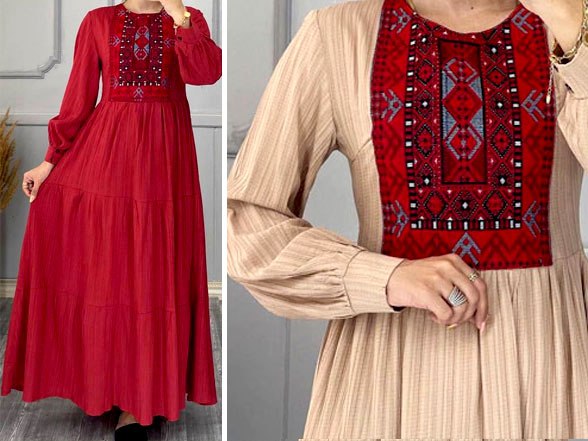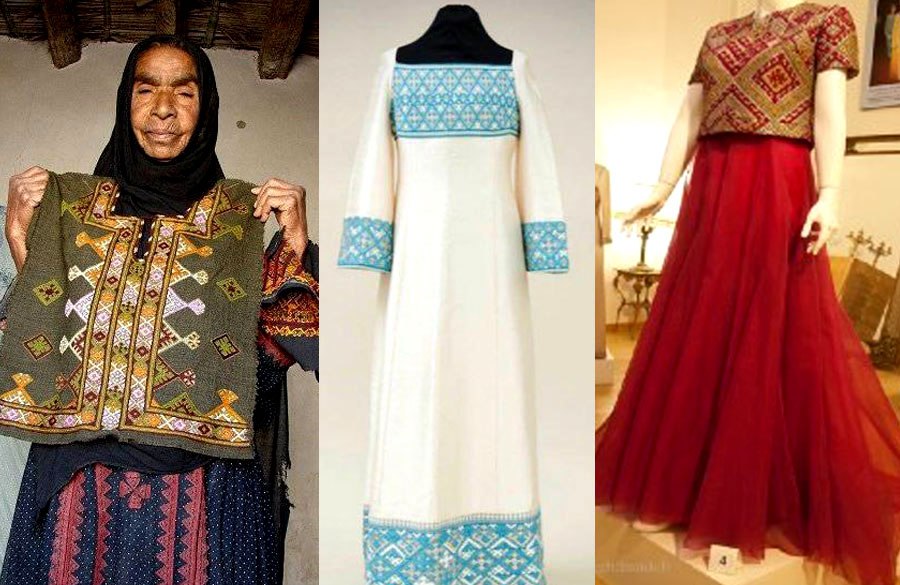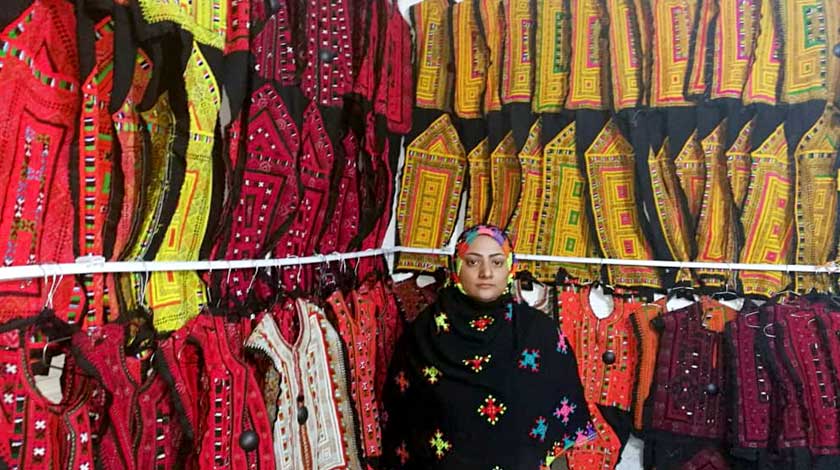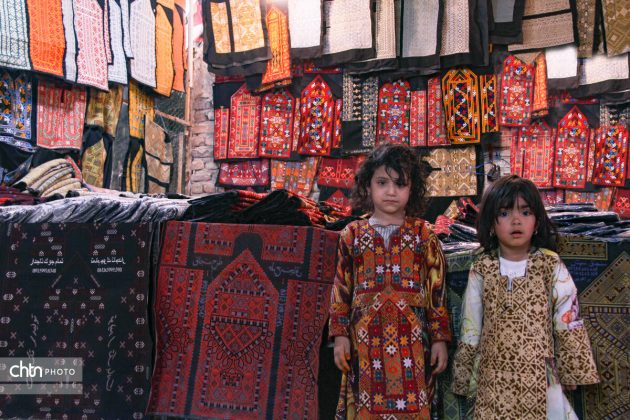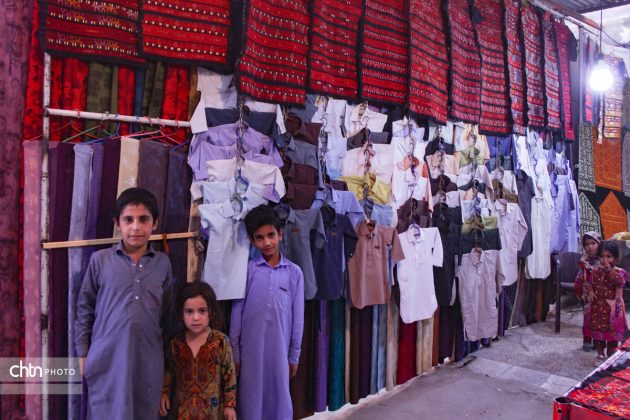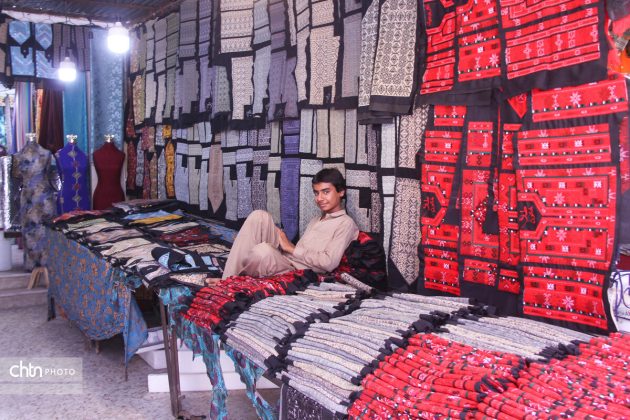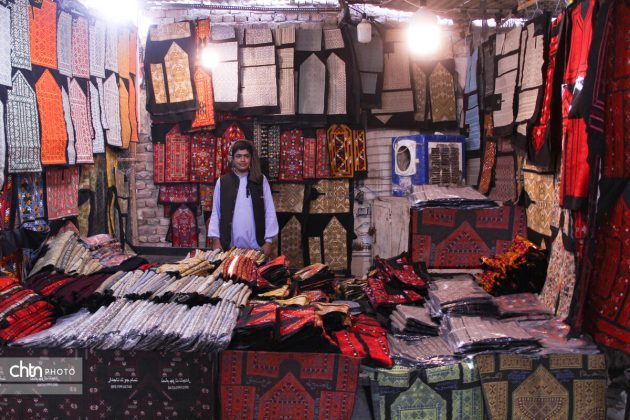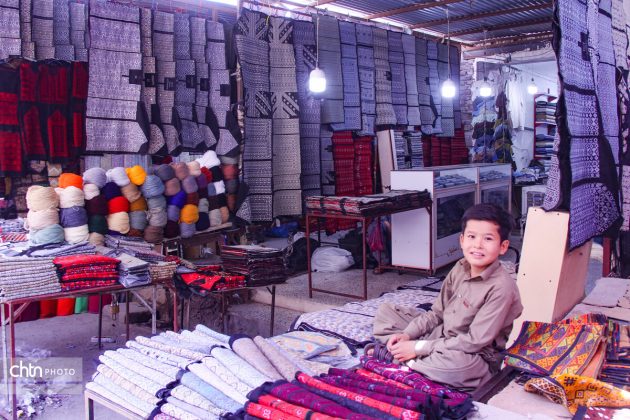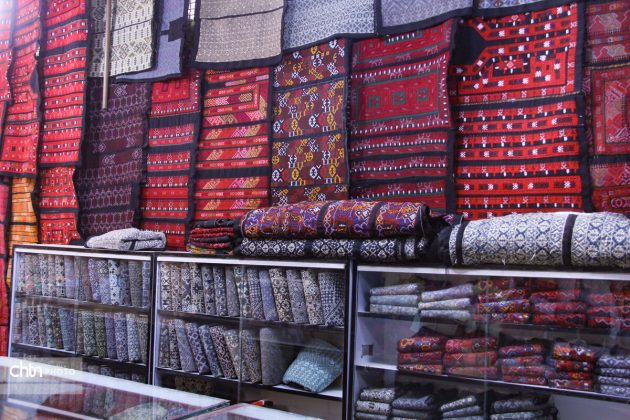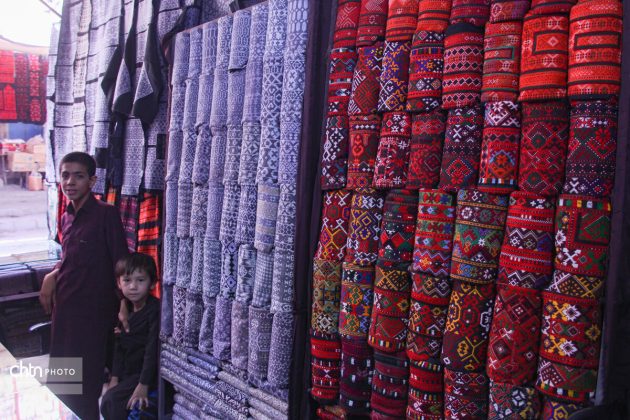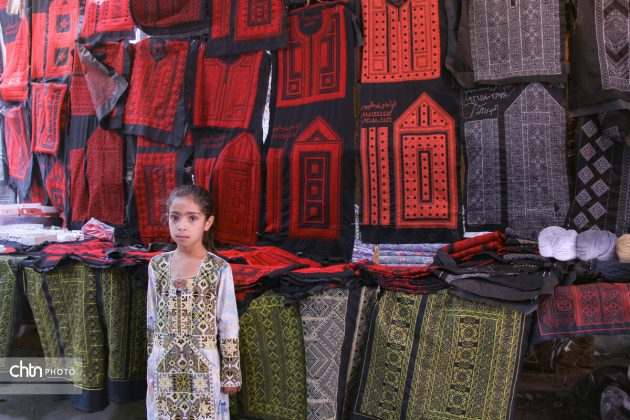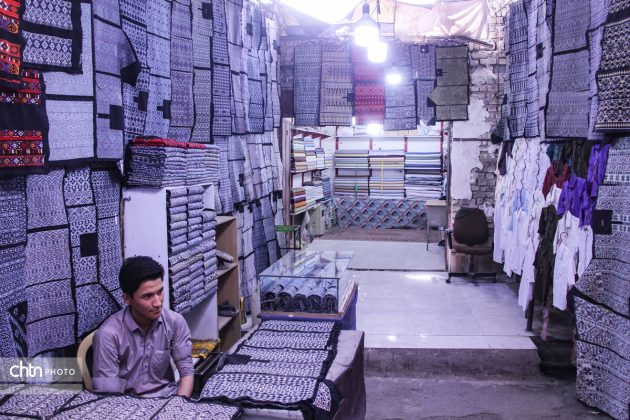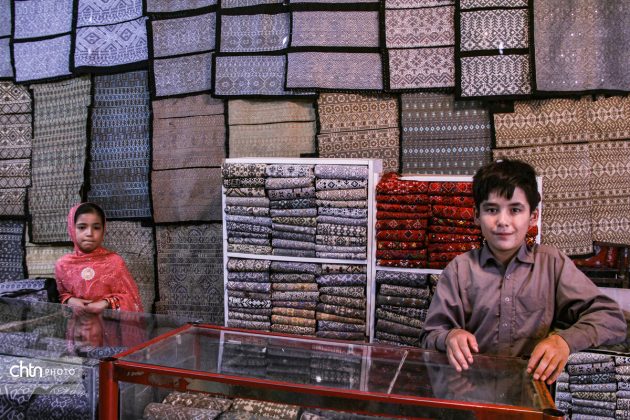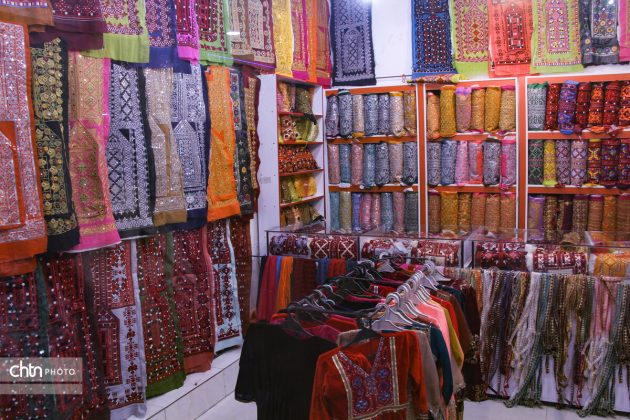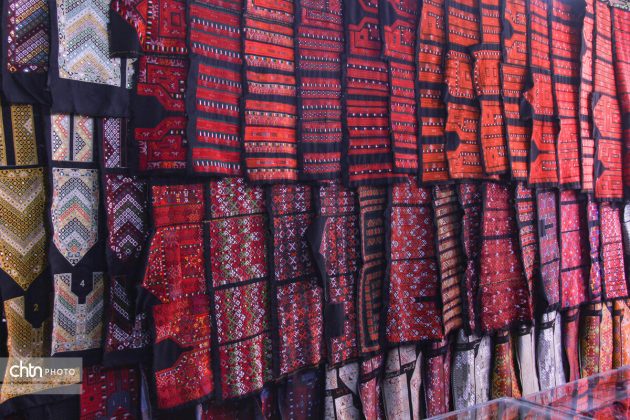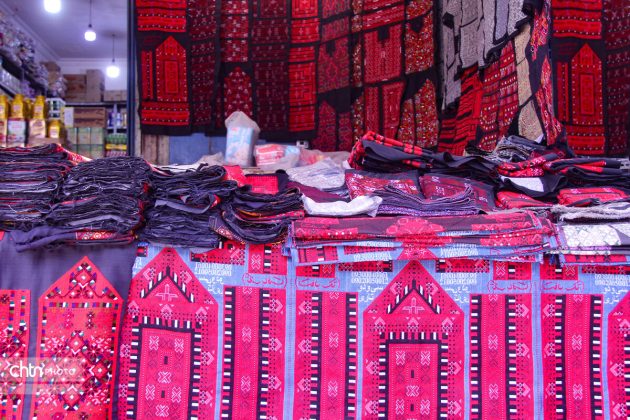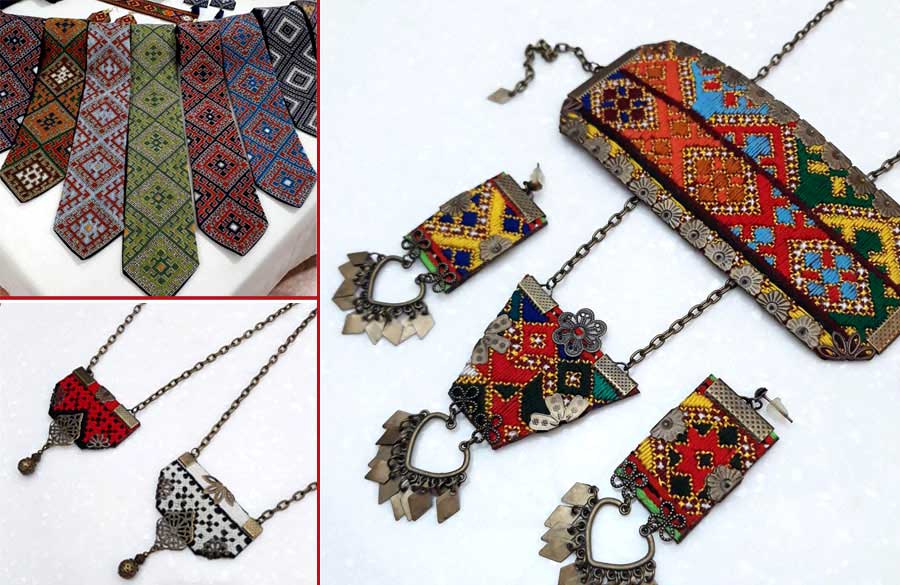The art of needlework in Iran is mostly done in Sistan and Baluchestan Province (Baluchs) and some other regions of Iran such as Isfahan (Armenians), Bakhtiaris, north of the country (Turkmens), Khorasan and Yazd (Zoroastrians in Yazd). Needle embroideries in these areas have differences in design, color and type of stitching.
But the most prominent needlework of Iran is related to Sistan and Baluchestan and it is called Baluchi embroidery.
During the past years, the art faded to some extent. But the young people of Sistan and Baluchestan, especially women and girls, have rolled up their sleeves and are trying to make the province known with a face other than deprivation.
By setting up various workshops and exhibitions as well as innovation and change in the traditional form of the needlework industry, they have taken the art to the fashion and clothing markets inside and outside of Iran.
What you are going to read in this article is about the art of needlework in Sistan and Baluchestan.
History of needlework
According to the historical textiles discovered in the western parts of Iran, this authentic art dates back to six thousand years before Christ.
According to the existing historical documents, the art of needlework has been very prosperous and popular in all periods of Iran’s history, and in some periods of history, it has enjoyed more prosperity due to the interest of noble and rich people.
In the past years, some people interested in art have collected and re-implemented authentic needlework art techniques in addition to clothes on items such as tablecloths, the margins of manteaus, shawls, ornaments, etc.
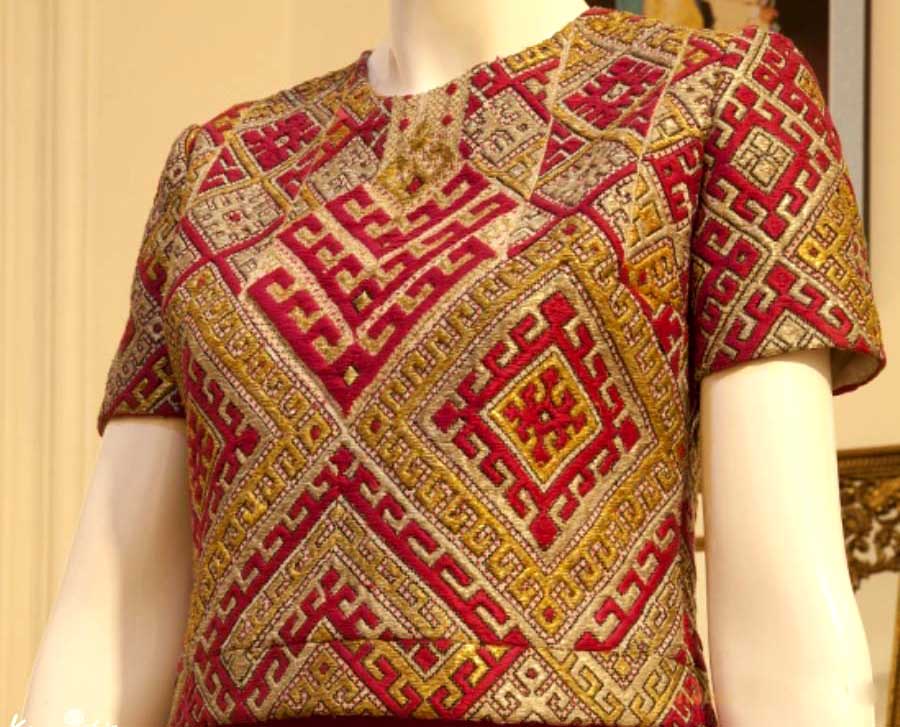
Tools for needlework
- Needle
- Thimble
- Scissors
- Thread
- Cloth
Colors and motifs used in Baluchi needlework
Colors in Baluchi needlework are limited to 6 colors (dark brown, red, orange, black, white, green and blue), but the sewing that includes these 6 colors is called a seven-color stitch. However, in most of the things that have been sewn, almost 80% of the design is red.
The threads used in this art are usually silk, because these threads are of higher quality and give more effect to the sewing pattern. Meanwhile, in relation to the fabric chosen for Baluchi needlework, it must have a specific and definite texture, which is called six threads.
Different kinds of widely used motifs
These motifs are generally the same in all decorations, but Baluch women can make changes in these motifs based on their own taste and experience.
Geometric patterns:
Geometric patterns are one of the most widely used motifs, that can be very diverse due to their characteristics. In addition to the motifs in the art of embroidery, it is used in other arts such as pottery, goldsmithing, etc.
Animal motifs:
The animal motifs that these patterns are derived from are the types of animals that may exist around or are in the region, or animal motifs that are derived from a person’s mentalities and are used for the sake of beauty.
Plant motifs:
Plant patterns are mostly abstract designs that are created by maintaining geometric features.
Mahtab Nowrouzi’s motifs in the national city of Needlework
Iranshahr is one of the most important cities in Sistan and Baluchestan in the field of arts and crafts.
The art of needlework is the most authentic art of Iranshahr, which shows the high taste and talent of the women of the city, that is why the city has been chosen as the national city of needlework in Iran.
Another reason for choosing Iranshahr as the national city of needlework is the presence of famous figures of this art in this city, who are internationally renowned in this field.
Lady Mahtab Nowrouzi was the most famous Baluch needlework artist who, due to her creativity and high taste in this art, created many clothes with elegant designs for the aristocrats when she was a teenager, especially for Farah Diba, the wife of Mohammad Reza Pahlavi, the last shah of Iran and now some of her works of art are kept in Saad Abad Palace Museum in Tehran.
Despite her old age, Mahtab Nowrouzi continued to practice this art until the last years of her life (2013).
The fame of Baluchi embroidery outside the borders of Iran
As it was said earlier, the art of needlework or Baluchi embroidery has entered foreign markets thanks to the efforts by the youth of Sistan.
“Somayyeh Irandegani” is one of the first women who became an entrepreneur in this field. She managed to set up the first needlework company in the country and directly and indirectly became an entrepreneur for dozens of people by using the art of Baluch women. With her own efforts and the efforts of other Baluch women and girls, needlework is exported to other countries such as the Netherlands, France and Oman.
Other entrepreneurs have reported exporting their products to neighboring countries and the Persian Gulf and Scandinavia, Canada and Australia.
Furthermore, Ms. Ziba Azizi is one of the Baluch women who, in addition to teaching needlework to young girls, has worked to raise the awareness of women, children and teenagers in villages. In 2018 she received a creativity award from the Women’s World Summit Foundation (WWSF).
Among other Iranian women in the field of fashion and clothing is Mahla Zamani. She designed and sewed a dress for the Queen of Brunei, and the art of needlework was used for decoration of the dress.
Domestic market of Baluchi embroidery in Sistan and Baluchestan
You can see pictures of one of the domestic markets of this Baluch art published by Chtn News Agency.
Different kinds of needlework products
As we said, needlework production has expanded and is not just limited to the traditional clothes of Baluchestan. Nowadays artists in handicrafts use this art to create other works such as bedspreads, rugs, tablecloths, curtains, ties, bags and even shoes.
A brief introduction of Sistan and Baluchestan
This province is in the southeast of Iran and was called “Maka” during the Achaemenid era. Among the most famous natural attractions of the province are Makran beaches, Lipar lagoon and Chabahar Miniature mountains.
And the most important historical attraction of the province is Shahr-e Sukhteh, Jalal Abad Citadel and Rostam Castle in Zabol.
Sistan and Baluchestan is also known as the wonderful city of fruits. There are many types of tropical fruits in this province, which are often exported.
Mirror embroidery, felt embroidery, coin embroidery, Kalpurgan pottery, lace embroidery, Sistan embroidery, etc. are other handicrafts of Sistan and Baluchestan Province.
READ MORE:

